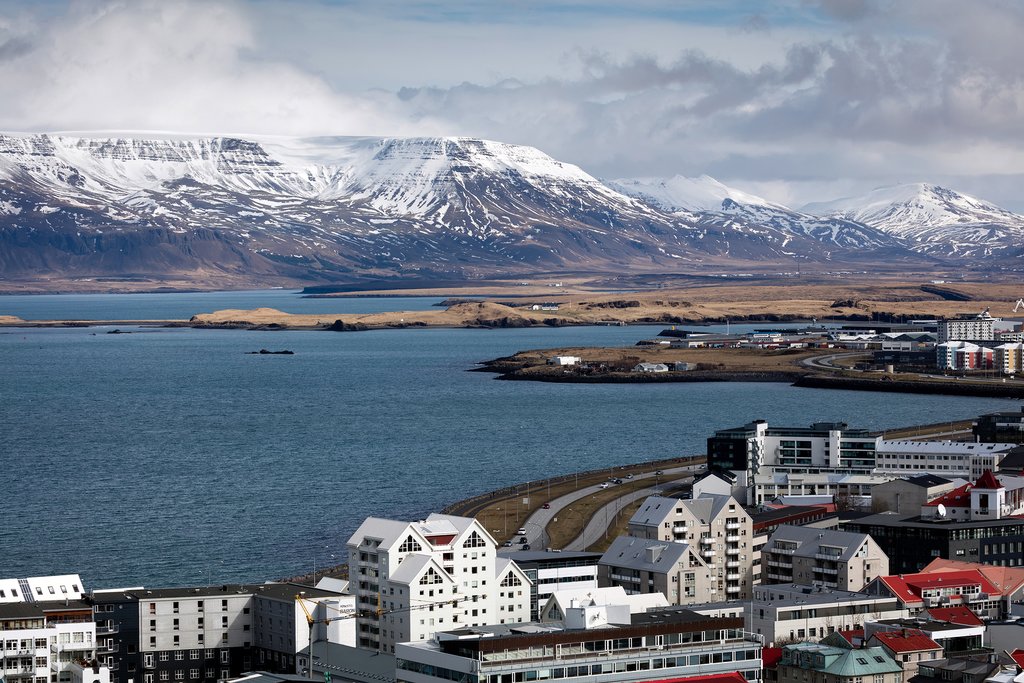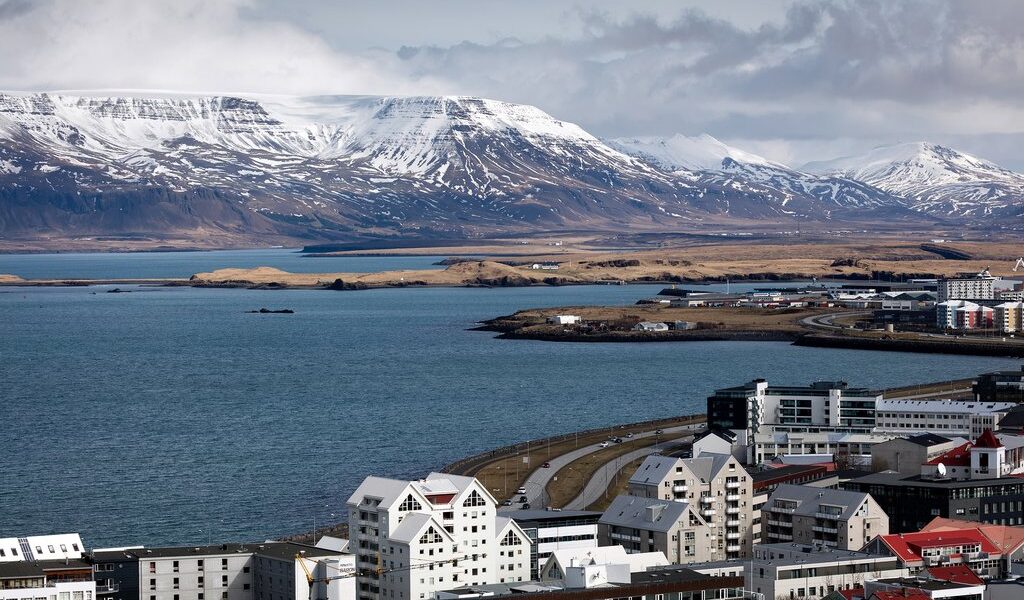
Traveling to Iceland in April offers a lot: crowds are small, hotel and flight deals can be found, there’s still the chance to see the Northern Lights, and there’s enough daylight to do and see a lot each day. Read on to learn more.
## Exploring Iceland in April: A Comprehensive Guide
April in Iceland marks a fascinating transition, a bridge between the stark beauty of winter and the vibrant energy of summer. While the landscape might still whisper tales of snow and ice, the burgeoning daylight and increasingly mild temperatures beckon travelers to experience the island’s unique charm. Though winter’s icy grip may linger, signs of spring begin to emerge, with the promise of warmer days ahead. Be prepared for the possibility of snow, as it often remains a frequent visitor, even as the season progresses.
The weather in April can be quite variable, and visitors should anticipate a range of conditions. Temperatures typically fluctuate between 34 and 45 degrees Fahrenheit. While this may sound chilly, it’s often enough to tempt some hardy locals to venture outdoors for a quick swim. The increase in daylight hours is perhaps the most significant change. At the beginning of April, you can expect around 13.5 hours of daylight, extending to a generous 16.5 hours towards the end of the month. In Northern Iceland, you’ll experience even more daylight, maximizing your time for exploration and adventure. This extended daylight not only brightens the landscape but also improves driving conditions, making it easier to navigate the island’s roads and reach various destinations.
Overall, April tends to be a more agreeable month compared to the preceding month of March. To ensure a comfortable and enjoyable experience, packing layers is crucial. A waterproof jacket is an absolute must, as Iceland’s weather can change rapidly. Additionally, comfortable walking shoes with good grip are essential for navigating the diverse terrains, from icy patches to rocky trails. Preparing for changeable weather is your best defense against the elements, ensuring you can fully appreciate everything Iceland has to offer.
April is considered shoulder season, a sweet spot between the peak tourist seasons of summer and winter. This means that while there will be more visitors compared to the depths of winter, you can still find more affordable accommodation options compared to the summer months, with potential savings of upwards of 50%. It’s a time when locals celebrate their Easter family traditions, indulging in roast lamb feasts, exchanging chocolates, and enjoying sweet candies. Spring skiing in the mountains is also a popular pastime, with many Icelanders traveling within the country to take advantage of the snow-covered slopes.
As the daylight hours continue their upward climb and the average amount of snow and ice decreases, conditions become increasingly favorable for renting a car and embarking on a self-guided adventure. Many travelers choose to begin or conclude their journey with a few days spent in Reykjavík, the vibrant capital city. From there, a classic itinerary involves exploring the iconic attractions along the Golden Circle and Southern Shore routes. This journey often begins with a visit to Thingvellir National Park, a site of historical and geological significance, and culminates in exploring the rugged coastline of Vík and the dramatic cliffs of Dyrhólaey.
For those with ample time, circumnavigating the entire island along the Ring Road is a rewarding experience. As you head east, be mindful of potentially challenging driving conditions and occasional road closures. Notable highlights along the way include the breathtaking Jökulsárlón Glacier Lagoon, the glittering Diamond Beach, and the captivating fjord coastline of the eastern region. This area boasts charming destinations like Höfn, the majestic Vestrahorn mountain, sightings of wild reindeer, and the picturesque village of Seyðisfjörður. Venturing north, you can discover the diverse landscapes of mountains, geothermal hot springs, and volcanic craters around Mývatn, explore the otherworldly formations of Dimmuborgir, marvel at the powerful Goðafoss waterfall, and visit the vibrant town of Akureyri. A detour to the remote Westfjords, the captivating Snæfellsnes peninsula, and the historical site of Reykholt offers further opportunities for exploration and discovery.
With the increasing daylight hours and temperatures, a wider range of activities become available to visitors. One of the biggest draws is the potential to witness the mesmerizing Northern Lights. While sightings are never guaranteed, your chances improve the further north you venture, closer to the Arctic Circle. Joining a guided tour, whether by boat, Super Jeep, or bus, or renting a car and escaping the city’s light pollution, can significantly increase your odds of experiencing this spectacular natural phenomenon.
Animal enthusiasts should seize the opportunity to visit Látrabjarg, the westernmost point of Iceland (and Europe), located in the Westfjords. Here, you can witness hundreds of thousands of nesting Atlantic puffins alongside other seabirds, such as Arctic terns, razorbills, and guillemots. Alternatively, consider booking a combined whale-watching and horse-riding tour that includes a puffin-seeking excursion, allowing you to observe these adorable birds up close.
For a unique perspective on the Icelandic terrain, consider joining a snowmobile tour that traverses snowfields and glaciers under the bright spring sun. The Langjökull glacier is a popular destination for these exhilarating adventures. In Skaftafell, within the Vatnajökull National Park, you can challenge your glacial climbing skills or hike to Svartifoss, a striking 65-foot waterfall framed by distinctive black basalt columns, creating an ethereal landscape. After a long day of sightseeing in the often unpredictable and windy weather, unwind with a relaxing soak in one of Iceland’s many geothermal pools or hot springs. The world-renowned Blue Lagoon spa is a perennial favorite, while the Mývatn Nature Baths in northern Iceland offer a more secluded alternative.
April in Iceland also boasts a vibrant calendar of events.
**Easter Week:** Icelanders traditionally enjoy a five-day holiday from Holy Thursday to Easter Monday, dedicating this time to family gatherings. Visitors may find themselves welcomed into local homes to share smoked lamb and indulge in oversized chocolate eggs.
**Reykjavík Children’s Culture Festival:** This week-long annual festival, dedicated to children and youth, showcases a variety of art disciplines through workshops and captivating performances.
**Sumardagurinn fyrsti:** According to the ancient Norse calendar, Sumardagurinn fyrsti signifies the first day of summer, falling on the first Thursday after April 18th. This public holiday is typically marked by city-wide closures, festive parades, and various sporting events.
**Aldrei fór ég suður (I Never Went South):** This rock music festival takes place towards the end of April, invigorating the town of Ísafjörður in the Westfjords, effectively awakening it from its winter slumber.
With its unique blend of winter remnants and spring awakening, Iceland in April presents an unforgettable travel experience. From exploring the iconic Golden Circle to venturing into the remote Westfjords, April offers a chance to witness the raw beauty of Iceland with fewer crowds and the promise of longer, brighter days. Remember to pack accordingly, embrace the unpredictable weather, and prepare to be captivated by the land of fire and ice.
B-1125

